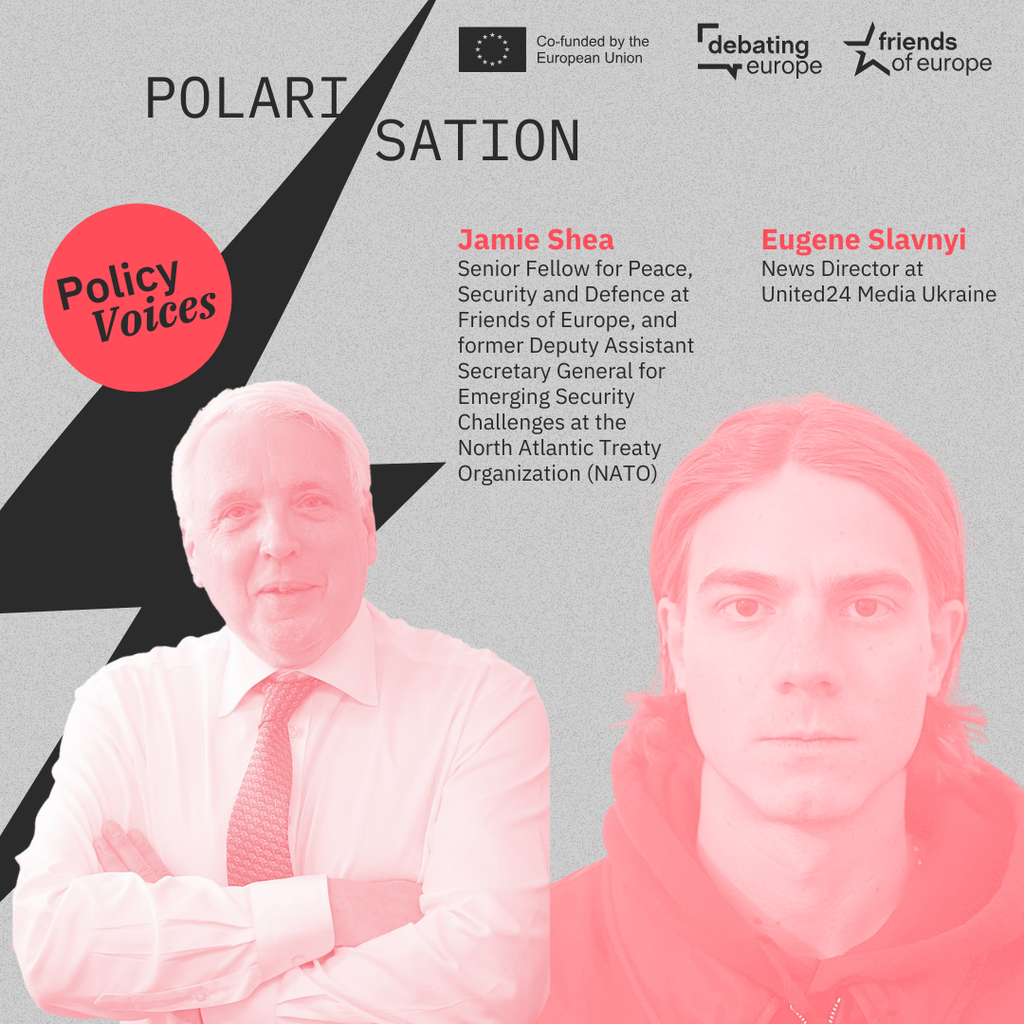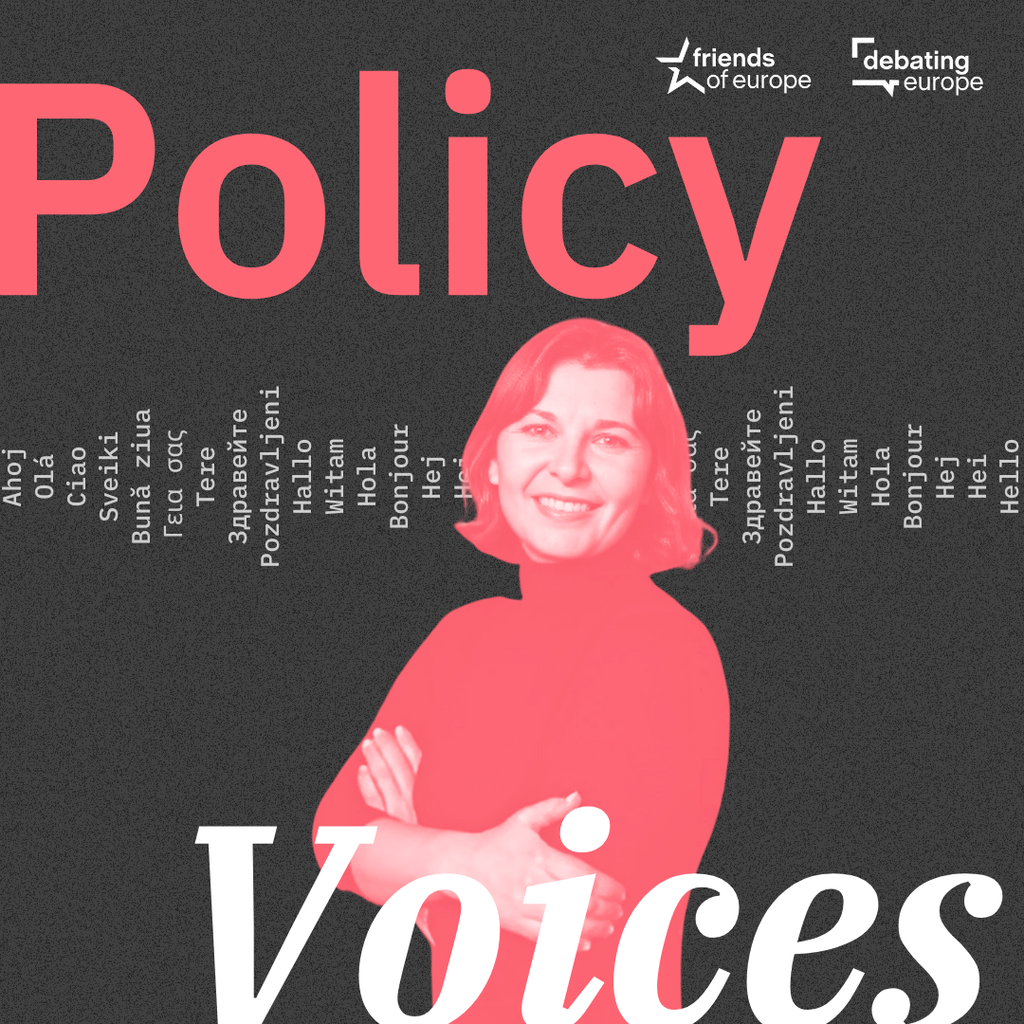From ambition to action: building Europe’s Defence Union
Past event In person

- Area of Expertise
- Peace, Security & Defence
Peace, Security & Defence

Klaus Schreiner is Head of the Peace and Emergency Aid Competence Centre at the Deutsche Gesellschaft für Internationale Zusammenarbeit (GIZ)

Advisor in the Peace and Emergency Aid Competence Centre at GIZ
International development organisations increasingly face the challenge of working in violent and fragile contexts to overcome the causes of conflict and to promote secure and peaceful development. Recent decades have seen a wide variety of policy and operational approaches – with varying degrees of success. Nepal’s development since 2000 is particularly interesting as an example of successful interactions between a range of actors across different policy areas.
In the 1990s structural inequality within the Nepalese feudal system and its inherent socio-economic marginalisation of lower castes, ethnic groups and women triggered violent conflict. The Maoist movement successfully recruited politicised young people and launched a guerrilla war against the monarchist government and its army. Support for the movement was particularly strong in neglected rural areas with high unemployment and poor development prospects. The emergence of a coalition between the Maoist party and the urban middle-class Seven Party Alliance, combined with mostly peaceful mass protests, eventually pressed the government into signing the Comprehensive Peace Agreement (CPA) in late 2006.
The CPA created the conditions for a safe and peaceful transition to greater democracy, social justice and stability. Nepal’s international partners, including Germany, systematically supported the peace process at multiple levels. Their long-standing partnership pre-dating the civil war and their continuous presence in the country during the war created the trust necessary for successful cooperation throughout the difficult implementation of the CPA. While civil war was still raging, several international partners launched the 2003 Basic Operating Guidelines (BOG), a coordinated donor stance on operational cooperation in support of a future peace process. Promoting principles of impartiality, transparency, accountability and inclusion the so-called ’BOG-Group’ of signatories became a reliable partner for successive Nepalese governments.
Key to the success of the overall peace process was the smooth disarmament, demobilisation and reintegration (DDR) of former Maoist guerrilla forces
To enable operations in an environment marked by security and political risks, the German implementing organisation GIZ and the UK Department for International Development (DFID) created a neutral Risk Management Office (RMO), closely cooperating with the BOG signatories. During the civil war the RMO established itself as an analytical and security network for projects and staff. It supported implementing agencies and their Nepalese partners by assessing risks and unintended impacts. Its training courses and continuous context analysis were important tools to put the ‘do no harm’ principle into practice.
The international (and particularly German, provided by the German Federal Ministry for Economic Cooperation and Development – BMZ) support for the peace process followed a multi-dimensional and cross-sectoral approach with a view to stabilising the security situation and strengthening the state’s delivery of services, providing a tangible peace dividend to the population. In doing so it focused on policy formulation and implementation alike.
At the national level, the Nepalese government received support for its Nepal Peace Trust Fund (NPTF). In addition to international funding, an advisory team was seconded to the Peace Fund Secretariat by Germany. It supported the Ministry of Peace and Reconstruction in formulating strategy, negotiating with donors and strengthening its administrative capacity. Under the ministry’s leadership the NPTF became a strategic mechanism for operational implementation of national policies at a local level. Key to the success of the overall peace process was the smooth disarmament, demobilisation and reintegration (DDR) of former Maoist guerrilla forces, since a failure would have posed a critical security challenge. Efforts were made in those regions especially affected by the civil war, particularly in the districts hosting the cantonments of the Maoist ex-combatants.
The core work on reweaving the social fabric took place at the district and municipality level, focusing on (re)integrating former Maoist combatants into civil society. Many former combatants are now acting as development ambassadors within their communities. The Support of Measures to Strengthen the Peace Process (STPP) project, financed by Germany and Norway, was able to quickly step in because of continuous work by GIZ and other partners in conflict regions throughout the war. The success relied upon the trust built up with both parties during the civil war and the project’s conflict-sensitive, inclusive approach. Hosting communities and cantonments were jointly involved in integrated project activities, fostering exchange and strengthening social cohesion. The measures included wide-ranging rebuilding of infrastructure and administrative buildings, fostering communal security, supporting disadvantaged groups, improving livelihood and stimulating local markets and businesses.
Since most conflicts cannot be resolved in the short term, enhancing conflict resolution skills was a crucial and lasting contribution to a sound ‘peace infrastructure’
At the level of individuals and village communities the Civil Peace Service (CPS) programme, funded by the German government, supported these efforts by training mediators and dialogue facilitators. These persons closely worked with the STPP project to support (re)integration of former combatants. The wide range of methods used by civil society actors allowed for carefully addressing issues arising from conflict and for creating durable space for dialogue. Since most conflicts cannot be resolved in the short term, enhancing conflict resolution skills among young people in particular was a crucial and lasting contribution to a sound ‘peace infrastructure’ and, therefore, to long-term reconciliation in Nepal.
The case of Nepal shows a multi-level approach where a national government and the international community jointly designed and implemented to link policy formulation and implementation at national and local level. This approach simultaneously achieved improvements in the security situation, progress towards socio-economic recovery, and promotion of long-term reconciliation and peace. Contributing to this overall approach in a meaningful way required the implementing agencies, including GIZ, to follow various courses of action while continuously analysing the changing context in order. This allowed them to ensure conflict sensitivity and avoid unintended negative impacts, to quickly and flexibly developing programmes to counter imminent risks of relapse to violence and simultaneously working at the government and community level to deliver a peace dividend, winning over the population.
These successes are fragile and require long-term engagement, particularly by the international community, if they are to be permanent. Changing attitudes and behaviour, overcoming deeply rooted concepts of ‘the enemy’ and restoring trust are painstaking processes requiring committed individuals and institutions.
This article is from Friends of Europe’s discussion paper ‘Investing in People, Peace and Prosperity’, in which international experts in these fields consider how policymakers can address the security-development nexus to build peaceful and inclusive societies. This discussion paper complements the Friends of Europe Policy Insight debate ‘To achieve Agenda 2030, give peace a chance’, held as part of the 2017 European Development Days.
Past event In person

Next event

Past event Online

Past event Online





Stay informed
We use cookies and similar technologies to adjust your preferences, analyze traffic and measure the effectiveness of our campaigns. Learn more about our privacy policy.